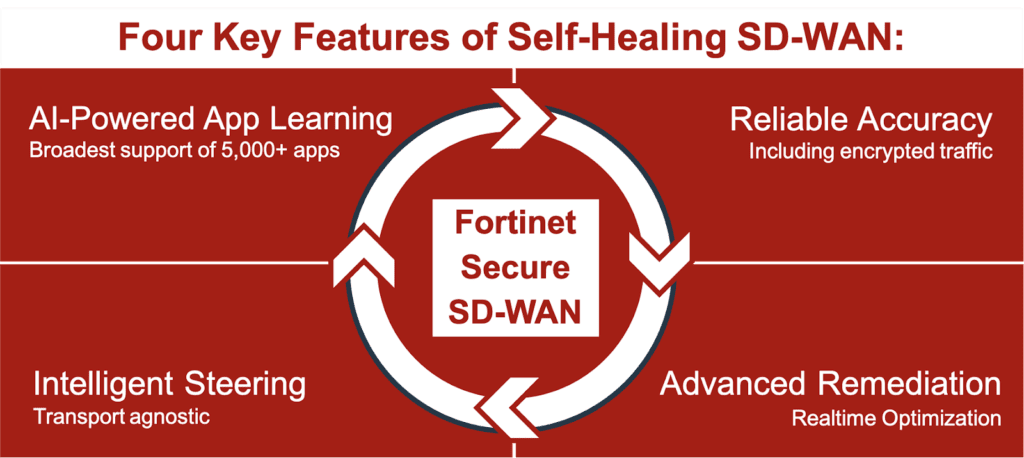The Internet is at times unpredictable and unreliable, and no matter how robust your WAN infrastructure is, brownout and blackout outages are sometimes unavoidable. Unreliable connectivity is especially a challenge for large and distributed enterprises that span multiple countries and regions that grapple with regular internet impairment.
As networks shift from traditional IP-based to application-driven, reactive to predictive and manual to automated, as well as a change to support work-from-anywhere, the business outcomes and expectations to deliver enhanced user experience and instant ROI benefits remain the same. Organizations that have deployed basic SD-WAN solutions are realizing that the time and hassle of a wide-area network that needs to be reconfigured or manually intervened upon every time there’s a wider internet connectivity issue has completely negated many benefits they sought to realize by implementing SD-WAN in the first place. As a result, the need for SD-WAN to enable a self-healing network – one that automatically fixes issues before they are widely realized – from the WAN edge to the cloud edge has now become a key requirement for organizations. So what does it take to enable Self-Healing SD-WAN?
AI-Powered Application Learning:
One of the key use cases of SD-WAN solutions has been to deliver the best application experience regardless of where the application resides, whether it be from the datacenter to the cloud. In order, to deliver a great application experience for end-users, the number of applications a solution can recognize needs to be considered.
Fortinet Secure SD-WAN provides broad support of 5,000+ applications and, more importantly, this is not a static list, rather one that Fortinet continuously adapts and evolves to meet business needs. In today’s world where applications are more dynamic than ever, Fortinet’s AI-powered application learning helps not only with the scale of applications supported but also with faster application learning.
Reliable Accuracy:
Accurate application detection becomes essential to ensuring the proper prioritization of business-critical applications over those that are non-critical. However, the challenge is that over 80% of the traffic in today’s world is encrypted, and most SD-WAN solutions are unable to handle this type of traffic.
Fortinet Secure SD-WAN enables reliable accuracy even for encrypted traffic, including TLS 1.3. What makes this even more compelling for our customers is the ability to do this at scale without compromising on performance.
Advanced WAN Remediation:
One of the big promises of SD-WAN solutions has been the remediation of WAN traffic during brownout and blackout conditions, leveraging capabilities like Forward Error Correction (FEC) and Packet Duplication. FEC and Packet Duplication have been key to enabling seamless unified communications like voice and video streaming based on critical parameters such as latency, jitter, and packet loss.
In today’s world where we rely on voice and video streaming more than ever, whether it be applications like Zoom, Webex, or Skype, the standard approach of Forward Error Correction needs a significant boost. With the latest FortiOS 7.0 release, Fortinet has advanced its WAN remediation capabilities with adaptive FEC, designed to dynamically enable FEC based on bandwidth conditions without manual assistance.
Intelligent Application Steering with passive WAN monitoring:
Beyond the number of applications supported, the accuracy and speed in which those applications can be detected must also be considered, and most importantly, the ability to steer the application in the right direction without reactively changing configurations – something many organizations struggle with.
Fortinet Secure SD-WAN provides a transport-agnostic solution to deliver the best experience over multiple paths – whether it is MPLS, broadband or LTE. Fortinet Secure SD-WAN is powered by a purpose-built SD-WAN processor that allows for faster application recognition and steering between multiple paths. The solution leverages passive WAN monitoring without adding more overhead to already burdened WAN situations. It also enables dynamic application switchover between multiple links without having to send active synthetic probes to measure WAN characteristics like latency, jitter and packet loss.
Integrating all of that functionality into a single, easy to deploy solution combined with AIOps to ensure consistent performance and reliability, enables networks to be more proactive than reactive. Fortinet Secure SD-WAN with its centralized management console can not only orchestrate connectivity, but also manage advanced routing and security functions, all through the same pane of glass. When you combine this with advanced analytics for a granular view of network and application performance, Fortinet Secure SD-WAN enables organizations to detect and respond to network anomalies and threats across the entire distributed deployment to enable a consistent, self-healing WAN experience across all edges.
Enable Self-Healing SD-WAN and take a security-driven networking approach to improve user experience and simplify operations at the WAN edge with Fortinet Secure SD-WAN.
